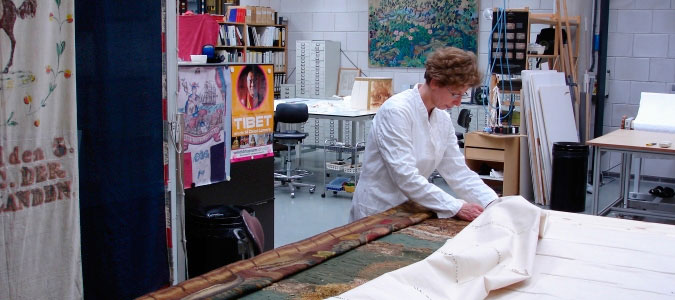
removing old linings
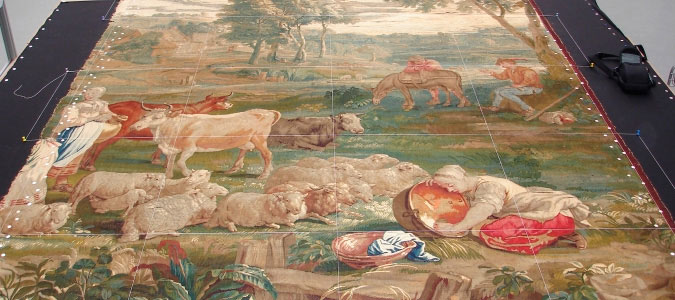
affixing supporting lining
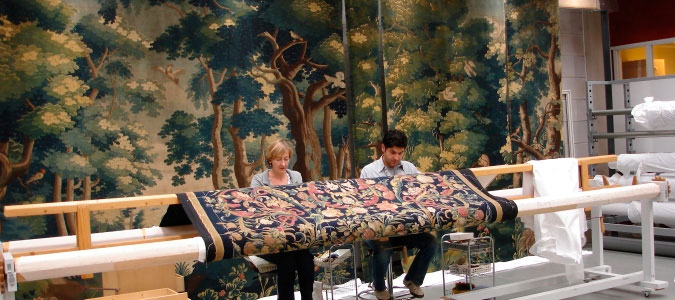
tapestry on the frame
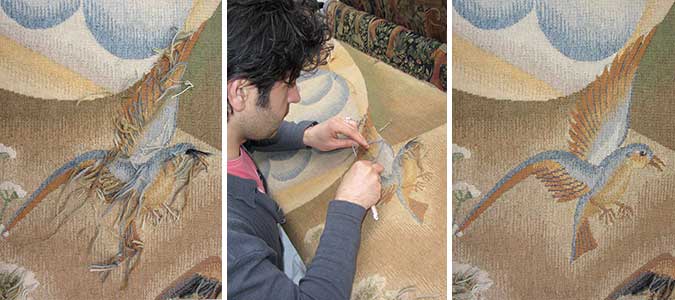
turning the tapestry from Paviljoen Welgelegen in Haarlem

turning the tapestry from Paviljoen Welgelegen in Haarlem
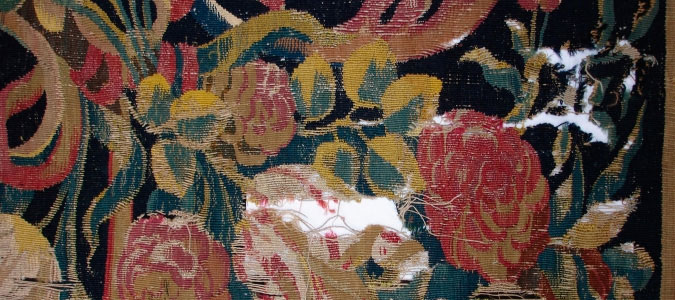
prior to preservation
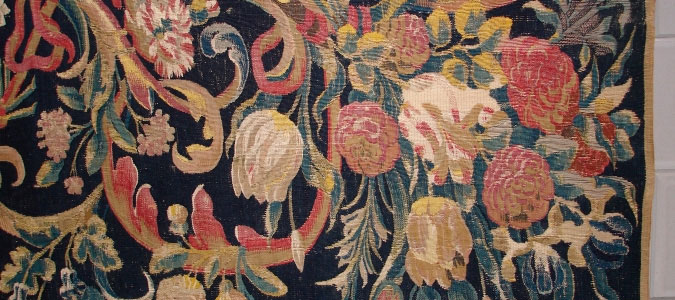
after preservation
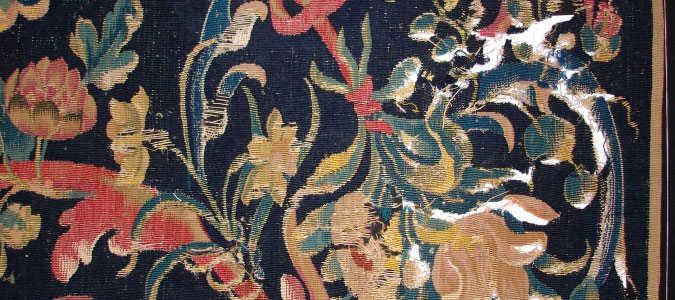
voor conservering

na conservering
Tapestries and wall coverings can be woven, for example Gobelins, but also knotted or machine made. The materials employed are commonly wool and silk for the weft and linen, wool and cotton for the warp.
The most common damage, in addition to soiling and staining, comes from wear to the warp and weft yarns and knots. The silk yarns are especially vulnerable and very sensitive to light damage and drying out. Shortfalls in the suspension system often cause damage through deformation. We also see a lot of insect damage (moths and carpet beetles).
If there is a suspicion that insects are present in tapestries/carpets, they are frozen for 14 days to minus 20ºC in our freezer.
The most common damage, in addition to soiling and staining, comes from wear to the warp and weft yarns and knots. The silk yarns are especially vulnerable and very sensitive to light damage and drying out. Shortfalls in the suspension system often cause damage through deformation. We also see a lot of insect damage (moths and carpet beetles).
If there is a suspicion that insects are present in tapestries/carpets, they are frozen for 14 days to minus 20ºC in our freezer.


